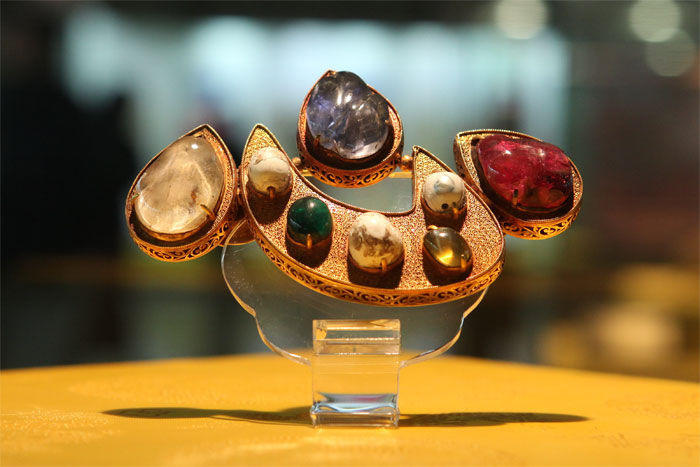Maharajas, Myths and Mysteries: The Fascinating History of India’s Jewels and Jewellery
- ABHAY JAIN
- Oct 1, 2021
- 3 min read
Updated: Oct 3, 2021
Spanning a legacy of 5,000 years, the jewellery of India is a striking expression of the country’s aesthetic and cultural history. The small number of jewels that have survived from different periods and different parts of the country, references in literature, texts on gemology, myths, legends and chronicles provide evidence of a tradition without parallel in the world.

The history of jewellery in India is, to a large extent, the history of the country itself.
For more than 2,000 years, India was the sole supplier of gemstones to the world. Golconda diamonds, sapphires from Kashmir and pearls from the Gulf of Mannar were coveted and drew merchants across land and sea to India.

Rulers:
For the rulers, jewels were a statement of power, prosperity and prestige. But for Indian women, jewellery was, and is, in many parts considered a social and economic security, the value of which will almost always appreciate, never depreciate.
The story of India’s fascination with jewellery begins 5,000 years ago in the Indus Valley.
At that time, India was the largest manufacturer and exporter of beads to the world. India was also home to the diamond and invented the diamond drill, which was then taught to the Romans.The craftsmen of the Indus Valley Civilisation used semi-precious material like carnelian, agate, turquoise, faience, steatite and feldspar, fashioning them into tubular or barrel shapes, decorating them with carvings, bands, dots and patterns, or setting them minutely with gold.

Indus Valley:
Going by the jewellery they made and wore, the ancient people of the Indus Valley Civilisation were an extremely sophisticated lot with a finely developed aesthetic sense, backed by intricate engineering skills. Take for instance the necklace excavated from Mohenjodaro now on display at the jewellery gallery of the National Museum in Delhi.
The story of Indian jewellery is incomplete without a mention of two of the most famous gems in the world – the Kohinoor and the Hope Diamond. Entrenched in history, having been passed down by some of the greatest rulers of massive empires in the Indian subcontinent, the Kohinoor is a priceless diamond the size of a ping pong ball. According to legends, in the 13th century, the diamond was found in Guntur, in Andhra Pradesh. Currently housed in the Tower of London in the United Kingdom, the diamond’s ownership has been much disputed by four countries – India, Pakistan, Afghanistan and Britain. Read more about its journey here.
One of the most spectacular gems in the world, the Hope Diamond is a lustrous blue gem weighing 45.52 carats. The largest blue diamond in the world, the gem is rumoured to be a cursed stone that brings ill luck to its owner. The stone was discovered in India and is believed to have been plucked from a sculpted statue of a goddess in a temple. In 1668, King Louis XIV of France bought it from a french traveller before re-cutting it several times to the gem that today adorns a chain of 45 white diamonds, surrounded by 16 alternating pear-shaped and cushion-cut white diamonds.

To know more about Indian jewels and the fascinating stories behind them, visit the Alamkara gallery of the National Museum in Delhi. It has the most extensive collection of jewellery in India. From the beautifully tumbled agate bead necklaces of Mohenjodaro and Harappa to the fabulous jewels adorned with images of gods and goddesses to the magnificent items that once reposed in the treasuries of the Mughal emperors and the maharajas, the collection spans all the important periods in Indian history.
A grassroots social enterprise in Maharashtra, NGO Seema Circle empowers underprivileged women from local villages through jewelry making, educational opportunities, and community collaboration. Featuring jewelry made from meticulous paper work, semi-precious stones, Swarovski crystals, and sterling silver components, the handcrafted collection is sold to an international market with all of the profits devoted to the artisans.
By Sanchari Pal. He has given a fascinating summary with all praises to fascinating gems & jewels.

Comments